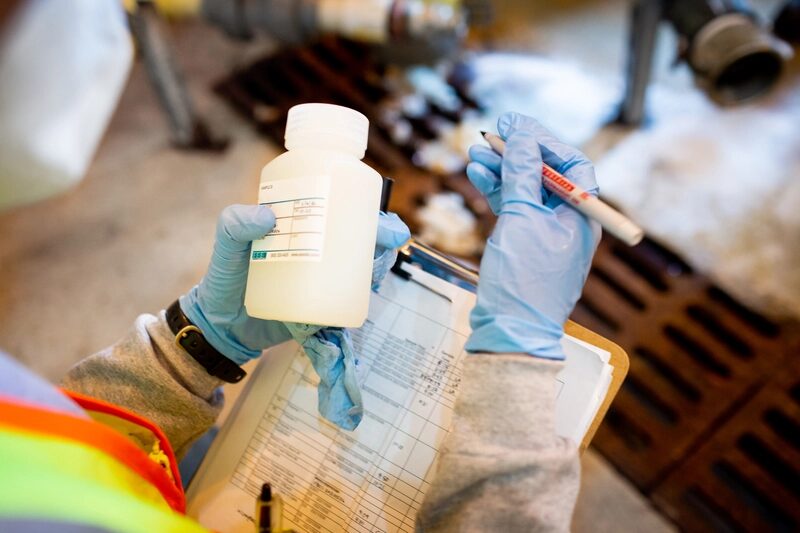2024 sampling results now available
Madison Metropolitan Sewerage District has released its 2024 sampling and analysis of PFAS, or per- and polyfluoroalkyl substances, in the local wastewater system. The data show low, stable levels for incoming wastewater from homes and businesses (influent), treated water (effluent), and biosolids, consistent with environmental levels found in groundwater and surface water.

2024 results at a glance:
- Influent: No continuous source of PFAS entering the sanitary sewer system identified at high concentrations.
- Effluent: PFOA (perfluorooctanoic acid) and PFOS (perfluorooctane sulfonic acid) remain below Wisconsin’s surface water criteria.
- Biosolids (Metrogro): Combined PFOA and PFOS levels are below the Wisconsin Department of Natural Resources’ interim biosolids guidance.
“Through our fourth year of voluntary PFAS sampling, we continue to see favorable, consistent results,” says Eric Dundee, Executive Director, Madison Metropolitan Sewerage District. “Publishing this data helps us plan and focus attention where it’s most useful and create awareness in the communities we serve.”
PFAS substances are a group of manmade compounds that have been in use for decades and are widespread in the environment. Resistant to heat, water and oil, PFAS is found in a wide range of products used by consumers and industry.
Wastewater treatment plants are “receivers” of PFAS used by manufacturers, businesses and consumers. Wastewater treatment plants do not produce PFAS, and conventional treatment processes are not designed to remove these compounds. Because PFAS are still manufactured and widely used, background levels can persist in wastewater and biosolids.
For public reporting, the District focuses on PFOA and PFOS. For additional context:
- Influent: The District treats about 37 million gallons of wastewater daily. PFOA and PFOS have remained low and stable over the last four years of testing, reflecting the predominantly residential and commercial nature of the greater Madison area. Sampling data does not indicate a single, continuous source or PFAS compounds at high concentrations.
- Effluent: Wisconsin adopted surface water criteria in 2022; 95 parts per trillion (ppt) for PFOA and 8 ppt for PFOS. The District’s effluent levels remain below these criteria.
- Biosolids: The District produces Metrogro, a liquid Class B biosolid product that is applied to local fields as a free, beneficial fertilizer. The WDNR currently has a draft interim strategy that provides guidelines for the land application of biosolids such as Metrogro. The District’s combined PFOA and PFOS level for Metrogro is low and does not trigger any action per WDNR’s strategy.
“As a clean water utility, we are committed to understanding our role in the PFAS cycle and contributing to data on this important issue,” says Martye Griffin, Director of Ecosystem Services at the District. “These results underscore our commitment to transparency, partnership with our communities, and a stewardship of our shared resources.”
2025 marks the District’s fifth year of PFAS sampling as part of a voluntary, proactive monitoring effort. In 2024, the District analyzed 33 PFAS compounds specified by WDNR. For detailed sampling methods and annual results for the last four years, see the Results page.






